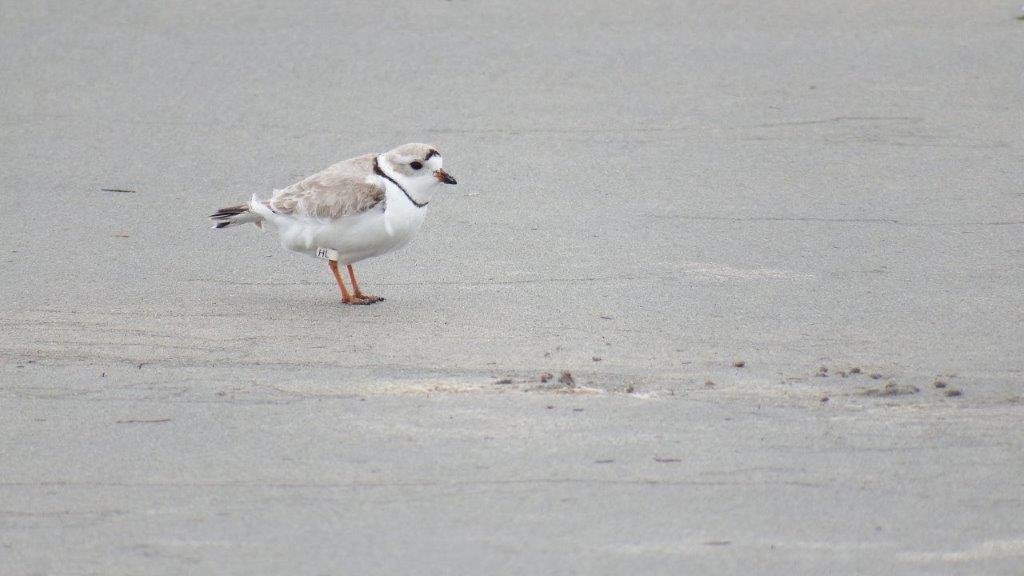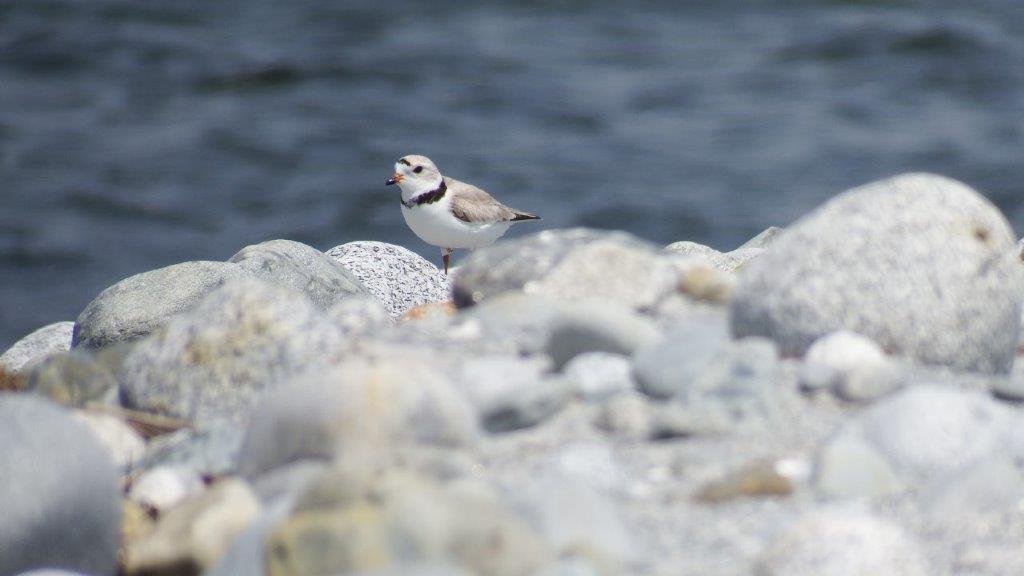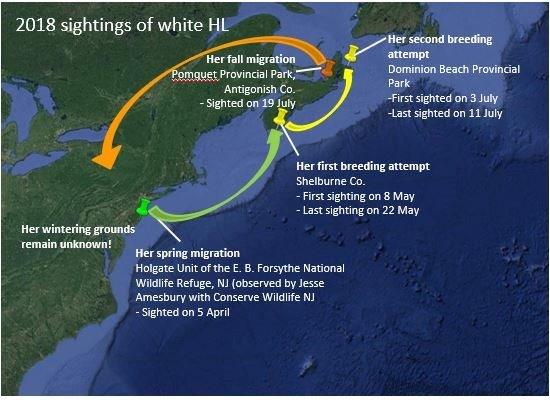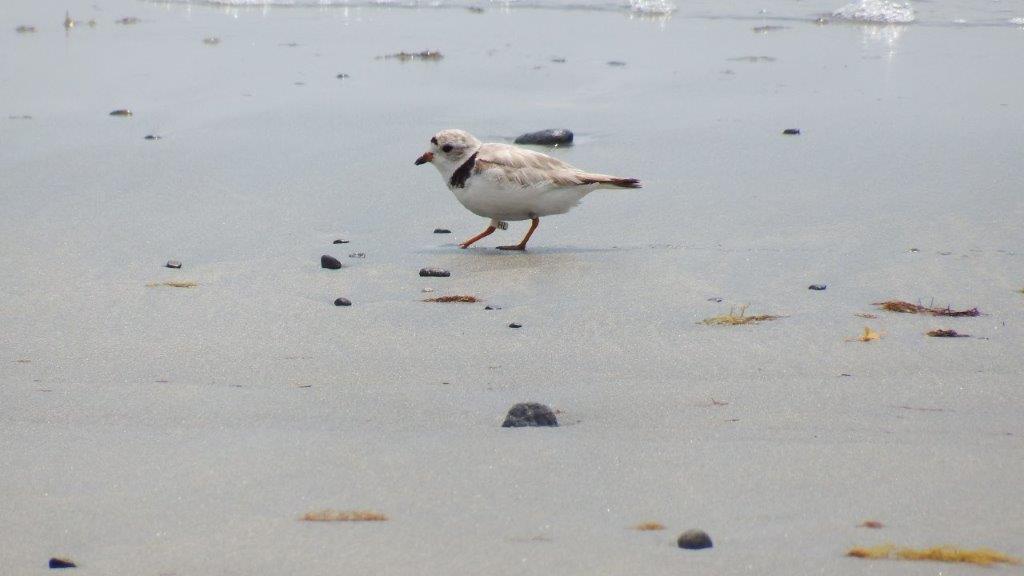By Laura Bartlett, Nova Scotia Program Manager, Birds Canada
“HL”, affectionately known as Helen Louise by our field biologists, is a banded Piping Plover (melodus subspecies). Helen Louise, along with many other Piping Plovers, was banded as an adult in 2014 by the Canadian Wildlife Service as part of an ongoing study to better understand this Endangered species. She has since been monitored thorough the Nova Scotia Piping Plover Conservation Program.
Piping Plovers typically return to the same beach every spring when they arrive on the shores of Nova Scotia and the rest of the Atlantic coast in Canada and northern United States. Helen Louise was banded at a beautiful beach in Southern Nova Scotia, not far from the town of Shelburne. Unsurprisingly, she nested at that same beach with her partners “HV” in 2014 and 2015 and “HE” in 2016. Then, in 2017, Helen Louise met “CJ”. They lost their first brood of chicks but successfully fledged their next brood of three chicks. So far, Helen Louise had followed the ordinary pattern of returning to the same beach year after year.

Photo: Laura Bartlett
She and CJ went their separate ways in August 2017 and reunited in April 2018. Then, after an unsuccessful first nesting attempt, Helen Louise decided to make a change. On July 3rd, a keen birder reported that a Piping Plover with band “HL” was spotted at Dominion Beach in Cape Breton. Helen Louise had travelled over 500 km north! There she met and nested with an unbanded male plover and they successfully fledged two chicks. What makes this story even more surprising was this became the first confirmed nest at Dominion Beach since the early 1990s!
After her adventures in Cape Breton, Helen Louise returned to her original beach on the south shore for the 2019 and 2020 breeding seasons. But she was not one to stay put! In 2021 she returned to the same beach for yet another breeding season – she was even courted by “T6”, her partner in 2020 – but she wasn’t interested. It seemed like she wanted to see the world! So she hopscotched 16 km south to another beach where she spent almost a month before flying more than 230 km north to Martinique Beach, not far from Halifax. As the summer drew to a close, she eventually made it back to her original beach before departing with the other plovers to their wintering grounds in the southern United States and Caribbean.
HL likes to keep some secrets. While she’s been spotted migrating through New Jersey in the spring of 2018 and in North Carolina in the Fall of 2019 and 2020, we still don’t know precisely where she spends her winter months, perhaps dreaming of her next adventures.

Photo: Laura Bartlett
Leg bands, like the ones on HL, make it easier for field technicians to identify individual birds and compare observations when they are spotted in new locations. Helen Louise is an excellent example of how individual birds can buck species trends, like consistently nesting at the same beach every year, leading to new insights about their behaviours. Helen Louise also nested at a beach that hadn’t seen a nesting pair in almost 30 years, which is why it is important for us to continue to monitor Piping Plover beaches that have not supported Piping Plovers in many years.
The Nova Scotia Piping Plover Conservation Program surveys more than 50 beaches a year. We rely heavily on volunteer support and reports from keen birders. In fact, volunteers found two new Piping Plover breeding beaches in Nova Scotia this year! It is promising to see this Endangered species expanding into new habitats as the population increases.

Piping Plovers face many threats like loss of habitat due to coastal development and sea level rise. They are also impacted by increasing human use at beaches, which is often accompanied by more dogs off leash, vehicles on the beach, and litter (which attracts plover predators). These things cause the birds a lot of stress and scare them away from good nesting habitat and feeding areas.
In Nova Scotia, we are working towards a short-term recovery goal of 65 breeding pairs of Piping Plovers across the province. I am happy to say that in 2021, we had 52 pairs in the province, up from 45 in 2019. We still have a long way to go, but there is always hope for these adventurous birds!

